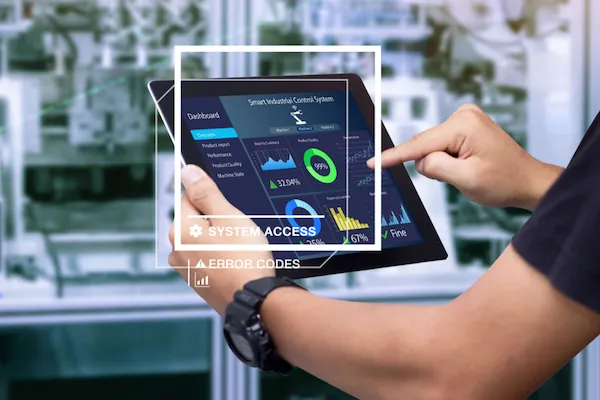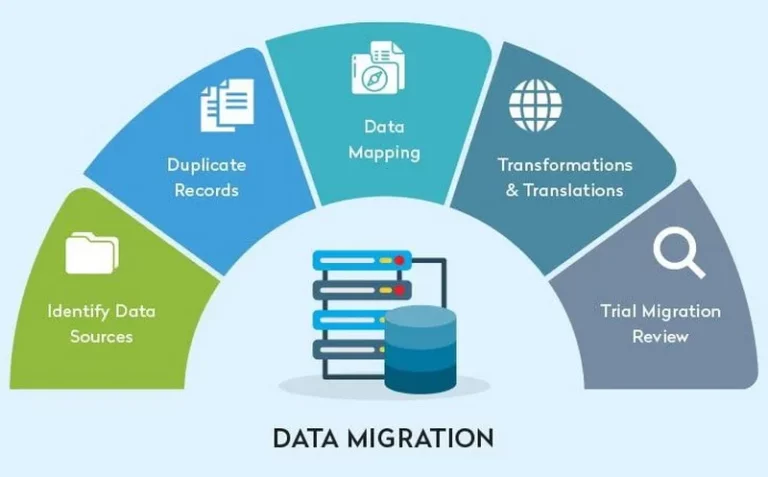Real-time Data Processing in Mechanical Databases
In the realm of industrial operations, the ability to process data in real-time has become a game-changer, revolutionizing how organizations monitor, analyze, and optimize mechanical systems. This blog post explores the significance of real-time data processing in mechanical databases, delving into techniques employed for real-time data processing and the role of streaming data in enhancing the efficiency of mechanical systems.
Real-time Data Processing in Mechanical Databases
The integration of real-time data processing in mechanical databases represents a quantum leap forward in industrial data management. Unlike traditional batch processing methods, real-time data processing enables organizations to analyze and act on data as it is generated, providing instantaneous insights into the operational status of mechanical systems. Let’s delve into the key aspects of real-time data processing in mechanical databases:
Immediate Decision-Making
Real-time data processing allows organizations to make immediate decisions based on the most current information. In mechanical databases, this capability is particularly vital for swiftly responding to anomalies, identifying potential issues, and implementing corrective actions in a timely manner. Immediate decision-making contributes to enhanced operational efficiency and reduced downtime.
Continuous Monitoring
The continuous monitoring enabled by real-time data processing ensures that mechanical systems are under constant surveillance. Whether it’s monitoring temperature fluctuations, vibration levels, or other critical parameters, real-time processing allows for the immediate detection of irregularities, facilitating proactive maintenance and minimizing the risk of equipment failures.
Dynamic Data Analysis
Real-time data processing techniques empower organizations to perform dynamic analysis of incoming data streams. This dynamic analysis involves the use of algorithms and analytics tools that can adapt and respond to changing conditions in real time. The ability to analyze data dynamically contributes to more accurate insights and predictions.
Optimizing Performance
By processing data in real-time, organizations can optimize the performance of mechanical systems on the fly. Adjustments to parameters, such as equipment speed, pressure levels, or temperature controls, can be made in response to real-time insights. This level of optimization is instrumental in ensuring that mechanical systems operate at their peak efficiency.
Real-time Data Processing Techniques in Databases
Real-time data processing in databases involves employing techniques that can handle and analyze data as it is generated. These techniques leverage the capabilities of modern database systems to process and analyze streaming data in real time. Let’s explore some key real-time data processing techniques in databases:
In-memory Processing
In-memory processing is a technique where data is stored and processed directly in the system’s memory, eliminating the need for frequent disk access. This accelerates data retrieval and analysis, making it well-suited for real-time applications. Database systems with in-memory processing capabilities can quickly analyze streaming data without the latency associated with disk-based storage.
Complex Event Processing (CEP)
Complex Event Processing is a technique that involves identifying and analyzing patterns within a stream of events. In the context of mechanical databases, CEP can be used to detect complex patterns or sequences of events in real time. This technique is valuable for identifying anomalies, predicting potential issues, and triggering immediate responses based on predefined rules.
Microservices Architecture
Microservices architecture involves breaking down applications into small, independently deployable services. In the context of real-time data processing, microservices allow organizations to build modular and scalable components that handle specific functions. This architecture supports the agility needed for processing and responding to streaming data in real time.
Parallel Processing
Parallel processing involves breaking down a task into smaller subtasks that can be processed concurrently. In the context of real-time data processing, parallel processing enables databases to handle multiple data streams simultaneously. This parallelization of tasks enhances the speed and efficiency of analyzing streaming data.
Streaming Data in Mechanical Systems
Streaming data, characterized by a continuous flow of data generated in real time, plays a pivotal role in the context of mechanical systems. The integration of streaming data in mechanical databases allows organizations to capture, process, and analyze data as it is generated by sensors and monitoring devices. Let’s explore the significance of streaming data in mechanical systems:
Continuous Monitoring of Parameters
Streaming data enables continuous monitoring of critical parameters in mechanical systems. Whether it’s monitoring temperature, pressure, or vibration levels, streaming data ensures that organizations have up-to-the-minute information on the operational conditions of their equipment.
Real-time Anomaly Detection
The continuous flow of streaming data facilitates real-time anomaly detection. Algorithms can analyze incoming data streams and identify deviations from normal operating conditions. This real-time anomaly detection is crucial for identifying potential issues before they escalate, enabling proactive maintenance and minimizing downtime.
Predictive Maintenance Insights
Streaming data provides the foundation for predictive maintenance insights. By continuously analyzing data from sensors and devices, organizations can forecast potential equipment failures, schedule maintenance activities proactively, and optimize maintenance strategies based on real-time conditions.
Dynamic Adjustments and Control
Streaming data allows for dynamic adjustments and control of mechanical systems. Organizations can respond to changes in operational parameters in real time, optimizing equipment performance, and ensuring that systems operate within desired parameters.
In-Memory Databases for Real-Time Processing
Traditional databases often rely on disk-based storage, leading to potential latency in accessing and retrieving data. In-memory databases, however, store and process data directly in the system’s RAM (Random Access Memory), eliminating the need for frequent disk reads. This fundamental shift in storage architecture accelerates data retrieval, making in-memory databases particularly adept at handling real-time processing requirements.
Benefits of In-Memory Databases
Speed and Low Latency
In-memory databases drastically reduce data access times by eliminating the need for disk I/O. With data residing in RAM, queries and operations can be executed with significantly lower latency, enabling real-time processing of data streams. This speed is instrumental in meeting the demands of dynamic industrial environments.
High Throughput
The direct access to data in RAM allows in-memory databases to achieve high throughput rates. They can efficiently handle a large number of transactions per second, making them well-suited for scenarios where a continuous flow of data requires immediate processing, such as monitoring and control systems in industrial settings.
Real-time Analytics
In-memory databases play a crucial role in facilitating real-time analytics. With the ability to process and analyze data as it is generated, organizations can derive immediate insights from their operational data. Whether it’s monitoring equipment health, analyzing production metrics, or detecting anomalies, real-time analytics powered by in-memory databases enhances decision-making agility.
Scalability
In-memory databases exhibit scalability, allowing organizations to handle growing datasets and increased processing demands. As industrial systems expand, in-memory databases can seamlessly scale to meet the requirements of an evolving data landscape. This scalability is essential for accommodating the dynamic nature of industrial operations.
Real-Time Analytics for Mechanical Data
Real-time analytics for mechanical data represent a paradigm shift in how organizations extract actionable insights from their operational data. In the context of industrial machinery and equipment, the ability to analyze data in real time holds immense value for optimizing performance, predicting maintenance needs, and ensuring overall operational efficiency.
Applications of Real-Time Analytics in Mechanical Data
Predictive Maintenance
Real-time analytics enable organizations to implement predictive maintenance strategies for mechanical systems. By continuously analyzing data streams from sensors and monitoring devices, anomalies and patterns indicative of potential equipment failures can be identified. This proactive approach allows for timely maintenance interventions, minimizing downtime and optimizing equipment lifespan.
Performance Optimization
Real-time analytics contribute to the continuous optimization of mechanical system performance. By analyzing real-time data on parameters such as temperature, vibration, and pressure, organizations can make dynamic adjustments to ensure that equipment operates within optimal conditions. This capability is crucial for industries where precision and efficiency are paramount.
Energy Efficiency Monitoring
Real-time analytics play a key role in monitoring and optimizing energy consumption in mechanical systems. By analyzing real-time data on energy usage patterns, organizations can identify opportunities for efficiency improvements. This not only contributes to cost savings but also aligns with sustainability goals.
Fault Detection and Diagnostics
Real-time analytics enhance the ability to detect faults and diagnose issues in mechanical systems as they occur. By analyzing streaming data, organizations can swiftly identify abnormal patterns or deviations from expected behavior. This real-time insight allows for rapid troubleshooting and corrective actions.
Continuous Data Processing in Database Systems
Continuous data processing in database systems is a dynamic approach that involves the uninterrupted analysis and handling of data streams. Unlike traditional batch processing, continuous data processing enables organizations to work with data as it is generated, providing real-time insights and responses. This approach is particularly valuable in industries where immediate actions based on fresh data are imperative.
Key Aspects of Continuous Data Processing
Event-Driven Architecture
Continuous data processing often employs an event-driven architecture, where actions are triggered in response to specific events or changes in data. Events, such as sensor readings or system alerts, are processed in real time, allowing organizations to respond promptly to evolving conditions.
Low Latency Processing
The emphasis on continuous data processing is on achieving low latency. Database systems designed for continuous processing minimize the delay between data generation and analysis, ensuring that insights are derived without significant delays. This low-latency processing is crucial for applications that demand immediate responses.
Real-Time Dashboards and Monitoring
Continuous data processing facilitates the creation of real-time dashboards and monitoring tools. Organizations can visualize streaming data, track key performance indicators, and gain immediate insights into the state of their operations. Real-time dashboards empower decision-makers with up-to-the-minute information for effective decision-making.
Dynamic Rule-Based Processing
Continuous data processing often involves dynamic rule-based processing. Organizations can define rules that govern how data is processed in real time. These rules can trigger specific actions or alerts based on predefined conditions, allowing for automated responses to events as they occur.
The integration of in-memory databases for real-time processing, the adoption of real-time analytics for mechanical data, and the embrace of continuous data processing in database systems signify a transformative shift in how organizations manage and leverage their operational data. As industries continue to evolve towards real-time decision-making, the synergy between advanced database technologies and real-time data processing will undoubtedly shape the future of agile, efficient, and high-performance industrial operations.
Conclusion
The integration of real-time data processing in mechanical databases, the utilization of advanced techniques, and the incorporation of streaming data represent a transformative shift in how organizations manage and optimize their mechanical systems. The ability to process data in real time empowers organizations to make immediate decisions, continuously monitor critical parameters, and respond dynamically to changing conditions. As industries continue to embrace the potential of real-time data processing, the synergy between databases and streaming data will undoubtedly shape the future of efficient, agile, and high-performing mechanical systems.










